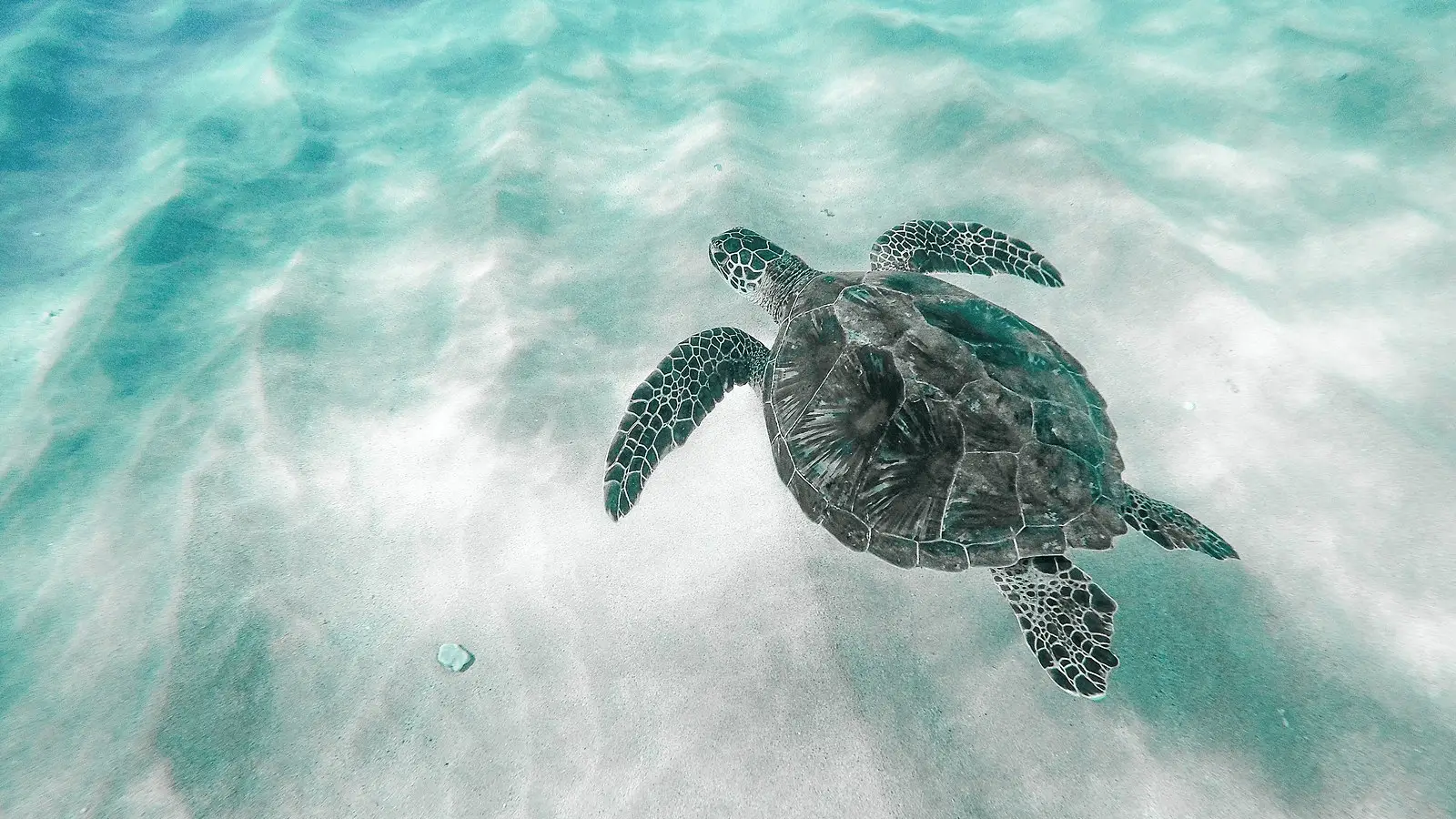Locals on Hawaii’s second largest island frequently tell you “Maui noka oi” (“Maui is the best”). And there are many things that keep people coming back. It’s not as crowded as Oahu, offers a better diversity of diving, majestic migrating humpback whales from November to May, and varied terrain — from the steep slopes of the 10,023-foot Haleakala Crater to the white sands of Kaanapali Beach to the narrow, long, and winding road to Hana.
What You Can See
Hawaiian green sea turtles are in abundance most places you dive, as well as white tip reef sharks, all types of tropical fish, moray eels, and the state fish, a reef triggerfish named Humuhumunukunukuapua, usually just called “Humuhumu.” You can do shore dives from Kaanapali Beach, but boat dives for deeper water are recommended.
What You Can Hear
Rhythmic, haunting humpback whale songs can be heard for several miles underwater. Even if you can’t see them, listen for the male’s beautiful singing during their annual visits when diving or snorkeling. Even about 200 yards away you can feel the sound vibrations reverberate through your body — it’s like getting splashed with a liquid wave of sound.
Water Temperatures
A range of about 70 to 84 degrees Fahrenheit around the island sounds like warm water, but consider that you typically dive for 45 to 60 minutes and that this can be 20 degrees colder than your body. You will get chilly. Wear a shorty wetsuit over a dive skin, as well as a light hood and gloves. No need for a dry suit here. Coldest months to dive are January and February.
Here are the best places to scuba dive in Maui along its 120-mile shoreline.
Go to our shop page for bikinis, board shorts and other essentials.
For more suggestions on best restaurants in Maui, the best things to do in Maui, and the best places to stay in Maui, click here.
Feature photo: Matt Flores

Airport Beach, Northwest Shore
Between Kaanapali Beach and Kapalua Bay is Airport Beach in the Kahekili Beach Park. With a small private airport on the hill above, this beach provides a covered gazebo, large lawn, an easy place for family gatherings, and a great beach dive. With depths of 20 to 30 feet along the shore and a seabed of 40 feet, visibility can vary because of winds that may kick up daily. Dozens of different colors and species of fish can be seen here, including lionfish, moorish idols, sergeant majors, needlefish, and more. Lots of free parking and public restrooms. in2scubadivingmaui.com

Puʻu Kekaʻa (Black Rock), Sheraton Maui Resort & Spa, Kaanapali Beach
About 10 miles north of Lahaina at the Sheraton Maui is the famous Puʻu Kekaʻa . This beginner to intermediate shore dive has been rated as one of the top four beach dives in America. The incoming current circles around the rocks and wall to form a 30-foot-deep natural aquarium that’s teeming with sea turtles, hundreds of tropical fish population, reef sharks, and more. Resort courses are offered here, as well as night dives to see different sea life after the sun sets, but beware of strong currents on the surface. Parking is $26 at the Sheraton, but only $2.50 per hour or $20 per day at nearby Whaler’s Village. shorediving.com

Lanai Cathedrals
For bragging rights that you’ve dived somewhere different, jump on a 45-minute ferry from Lahaina Harbor across the Maui Channel to the private island of Lanai, owned by Larry Ellison of Oracle fame. On its west side, Cathedrals comprises two large caverns that are about 45 to 60-feet deep and frequently mentioned as one of the “Top 10 Dive Sites in the World.” These dramatic lava cathedrals offer a 100-foot-long lava tube about 20-feet high, excellent visibility, plus a chance to see turtles, dolphins, octopi, all kinds of colorful fish, eels, and more. Definitely bring a flashlight. Not recommended if you’re claustrophobic. lahainadivers.com

Molokini Crater, South of Kihei
This protected conservation district off the southwestern coast is 3.6 miles from the Kihei boat ramp or about 45 minutes from Maalaea Harbor. Boats leave at 7am when winds and currents are minimal. The crater is 20 to 50 feet deep with excellent visibility up to 150 feet where you may see harmless white tip reef sharks, spotted moray eels, lobsters, and about 250 species of tropical fish. The back side is a sheer drop to much deeper water and usually more sharks. Get there early in the morning to avoid ascending from your dive to see the crescent-shaped area filled with “cattlemarans” overflowing mostly with snorkelers. mauidiveshop.com

Turtle Town Coral Reef, Makena Landing, South Maui
You can look… you can photograph… but don’t touch the protected, endangered Hawaiian green sea turtles. Along this stretch of the coast between Nahuna Point and Black Sand Beach, south of Wailea at Makena Landing, you can see over a dozen turtles on one dive, including several at a “cleaning station” nicknamed “The Car Wash” where wrasse fish and shrimp eat parasites off their shells and faces. Protected from winds, visibility is typically excellent. Other places to view turtles for shore dives are Makena Landing, Maluaka Beach, Keawakapu Beach, Ulua Beach, Kaanapali Beach, and Napili Bay. makenalandingpark.com
Did we miss your favorite spot?
Please let us know! Email us at editorial@localgetaways.com

